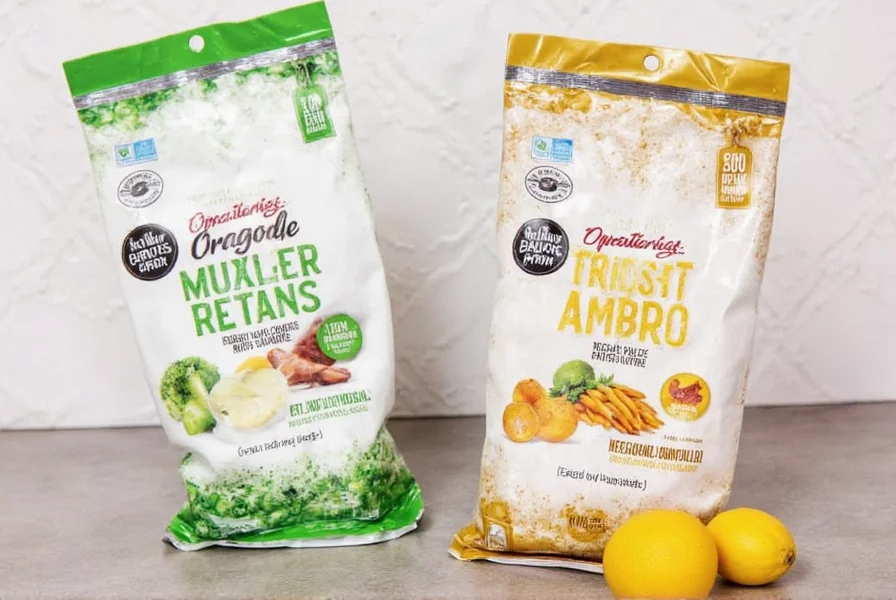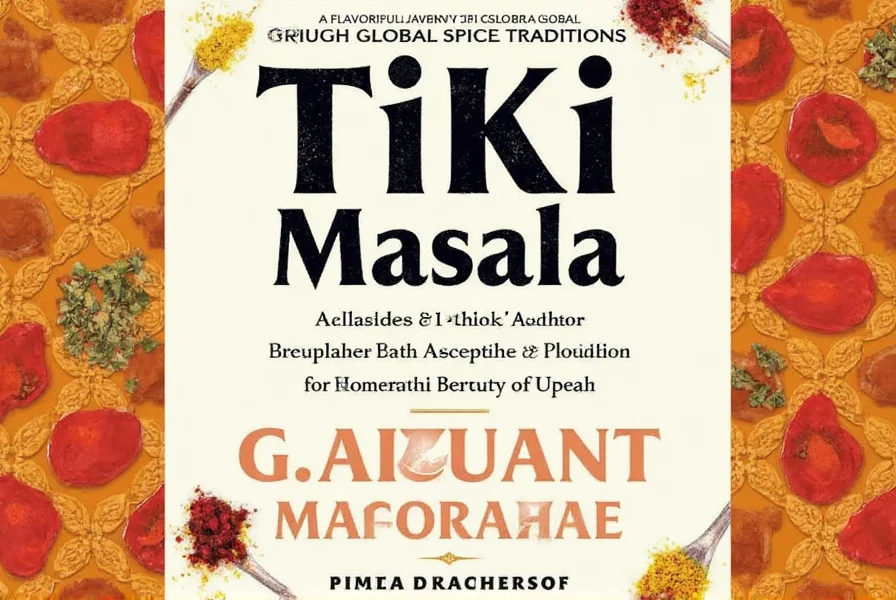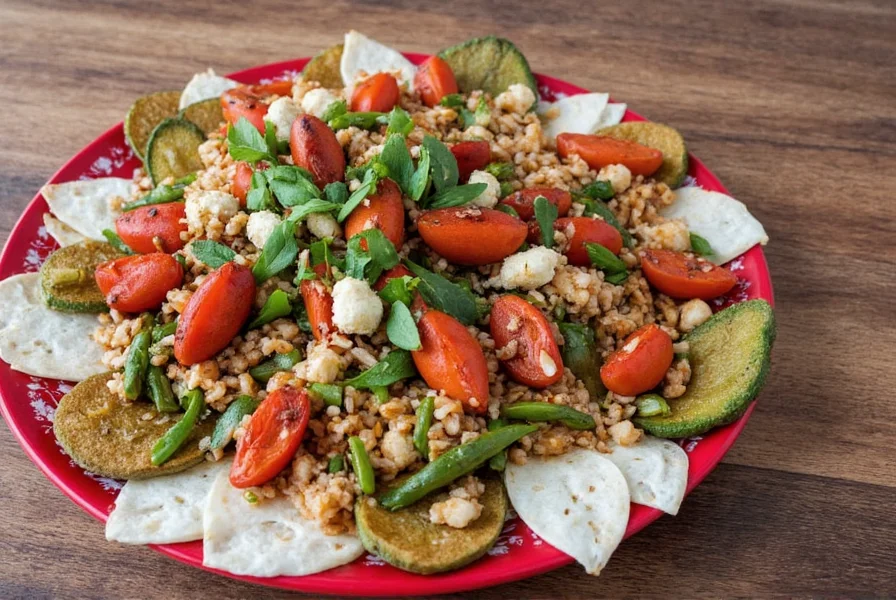Tiki Masala: A Flavorful Journey Through Global Spice Traditions
Table of Contents
Introduction to Tiki Masala
Tiki masala is a vibrant, aromatic spice blend that brings together the essence of tropical flavors with a touch of global influence. Known for its sweet, smoky, and slightly spicy notes, tiki masala is often used in Caribbean and Polynesian cuisine, but its versatility has made it popular far beyond those regions. Whether you're grilling meats, marinating seafood, or experimenting with desserts, tiki masala can add a unique twist to your dishes.
This article explores the origins of tiki masala, how it fits into the broader world of global spice traditions, and practical tips for using it in your cooking. We'll also provide a detailed buying guide to help you choose the best tiki masala for your needs. Let’s dive into this flavorful journey!
Global Spice Traditions and Tiki Masala
Spices have played a central role in human history, shaping cuisines across continents. From the bold flavors of Indian garam masala to the delicate warmth of Moroccan ras el hanout, each region has developed its own unique spice blends. Tiki masala, while not as widely known as some of these, holds a special place in the world of tropical and island-inspired cooking.
Originating from the Caribbean and Polynesia, tiki masala is a blend of spices such as allspice, cinnamon, nutmeg, clove, and sometimes chili. It’s commonly used in marinades for grilled meats, as a seasoning for seafood, and even in cocktails like the famous piña colada. The blend’s name comes from the word “tiki,” which refers to the carved wooden figures found in Polynesian culture, symbolizing strength and protection.
One of the most interesting aspects of tiki masala is its adaptability. While it has roots in traditional island cooking, modern chefs and home cooks have taken it in new directions. Some variations include adding citrus zest, ginger, or even coffee for a more complex flavor profile. This flexibility makes tiki masala a great tool for anyone looking to experiment with different cuisines.
How Tiki Masala Differs from Other Spices
To better understand tiki masala, let's compare it to other popular spice blends:
| Spice Blend | Main Ingredients | Flavor Profile | Cooking Uses |
|---|---|---|---|
| Tiki Masala | Allspice, Cinnamon, Nutmeg, Clove | Sweet, Smoky, Slightly Spicy | Grilled Meats, Seafood, Cocktails |
| Garam Masala | Cumin, Coriander, Cardamom, Cinnamon | Warm, Earthy, Aromatic | Indian Dishes, Soups, Stews |
| Ras El Hanout | Multiple Spices, Including Cumin, Cinnamon, Paprika | Complex, Rich, Spicy | Moroccan Cuisine, Braised Meats |

As you can see, tiki masala stands out with its sweet and smoky notes, making it ideal for dishes that benefit from a touch of tropical flair.
Practical Tips for Using Tiki Masala
If you're new to tiki masala, here are some tips to help you make the most of this versatile spice:
- Marinate Meats: Use tiki masala as a dry rub for chicken, pork, or beef before grilling. Its sweet and smoky flavor pairs well with the char of the grill.
- Enhance Seafood: Sprinkle it over shrimp, fish, or scallops before baking or pan-searing for a burst of flavor.
- Add Depth to Sauces: Mix a small amount of tiki masala into barbecue sauce or glaze for a unique twist on classic dishes.
- Experiment with Desserts: Try adding a pinch to fruit compotes, oatmeal, or even chocolate desserts for an unexpected layer of flavor.
- Use in Cocktails: A dash of tiki masala can elevate drinks like piña coladas, mojitos, or even hot cocoa.
Remember, tiki masala is a strong spice, so start with a small amount and adjust to taste. You can always add more, but you can't take it away once it's in the dish.
Pairing Tiki Masala with Other Flavors
Tiki masala works well with a variety of ingredients. Here are some pairing ideas:
- Citrus: Lime, orange, or grapefruit complement the sweetness of tiki masala.
- Herbs: Fresh herbs like cilantro, parsley, or thyme can balance its richness.
- Acidic Elements: Vinegar, lemon juice, or tomatoes cut through the spice and enhance the overall flavor.
- Smoky Elements: Smoked paprika or chipotle can deepen the smoky notes in tiki masala.

These combinations can help you create balanced and exciting dishes that showcase the full potential of tiki masala.
Buying Guide for Tiki Masala
When choosing tiki masala, there are several factors to consider, including quality, flavor profile, and intended use. Below is a detailed buying guide to help you select the right product:
Key Features to Look For
- Ingredients: Look for a blend that includes allspice, cinnamon, nutmeg, and clove. Some varieties may also include chili, ginger, or citrus zest.
- Origin: Tiki masala is typically associated with the Caribbean and Polynesian regions, so check if the product is labeled accordingly.
- Quality: Choose a brand that uses fresh, high-quality spices without artificial additives or preservatives.
- Consistency: The texture should be fine and even, not clumpy or gritty.
Recommended Products
1. Tiki Island Spice Co. – Original Tiki Masala
Features: Handcrafted blend with allspice, cinnamon, nutmeg, and clove. No artificial flavorings or fillers.
Advantages: Offers a rich, authentic flavor that's perfect for both cooking and cocktails.
Use Cases: Ideal for grilling, baking, and adding depth to sauces.
Target Audience: Home cooks and professional chefs looking for a premium option.
Suitable Occasions: BBQs, tropical-themed dinners, and creative cocktail parties.
2. Tropical Spice Collective – Sweet & Smoky Tiki Masala
Features: Includes additional ingredients like dried mango and chili for a sweeter, spicier profile.
Advantages: Unique flavor that adds complexity to both savory and sweet dishes.
Use Cases: Great for desserts, marinades, and experimental cooking.
Target Audience: Foodies and adventurous cooks who enjoy blending global flavors.
Suitable Occasions: Fusion dinners, themed events, and dessert bars.
3. Island Breeze Spices – Organic Tiki Masala
Features: Certified organic and free from synthetic additives.
Advantages: Health-conscious choice with no artificial preservatives.
Use Cases: Suitable for everyday cooking and health-focused recipes.
Target Audience: Eco-conscious consumers and those following a clean eating lifestyle.
Suitable Occasions: Family meals, casual gatherings, and daily use.

When purchasing tiki masala, always check the label to ensure it aligns with your flavor preferences and dietary needs. If you're unsure, look for products with clear ingredient lists and customer reviews.
Conclusion
Tiki masala is more than just a spice—it's a gateway to the rich and diverse world of global spice traditions. With its sweet, smoky, and slightly spicy flavor, it offers endless possibilities for both seasoned chefs and curious home cooks. Whether you're grilling, baking, or crafting cocktails, tiki masala can bring a touch of the tropics to your kitchen.
By understanding its origins, learning how to use it effectively, and choosing the right product, you can unlock the full potential of this unique spice. So next time you're looking to add a little island magic to your meal, reach for a pinch of tiki masala and let your taste buds travel the world.
In short, tiki masala is a must-have for anyone who loves to experiment with flavors and explore the world through their food. With its deep roots in global spice traditions and its modern-day versatility, it’s a spice that continues to inspire and delight.











 浙公网安备
33010002000092号
浙公网安备
33010002000092号 浙B2-20120091-4
浙B2-20120091-4